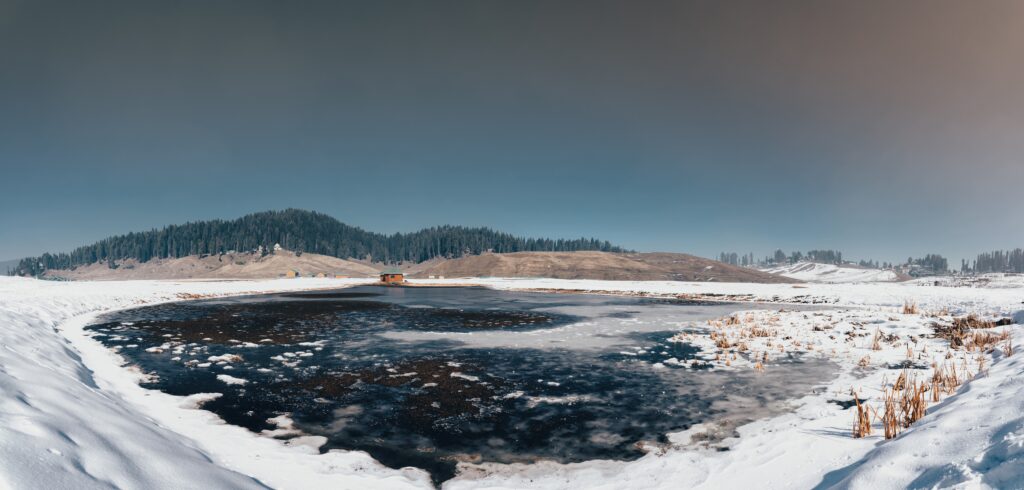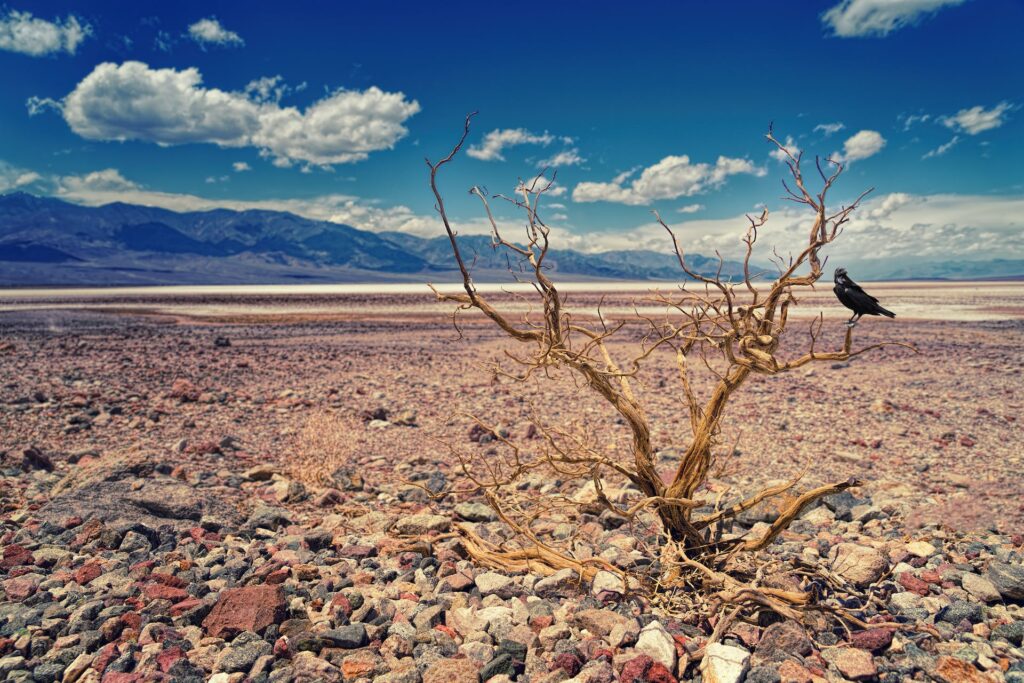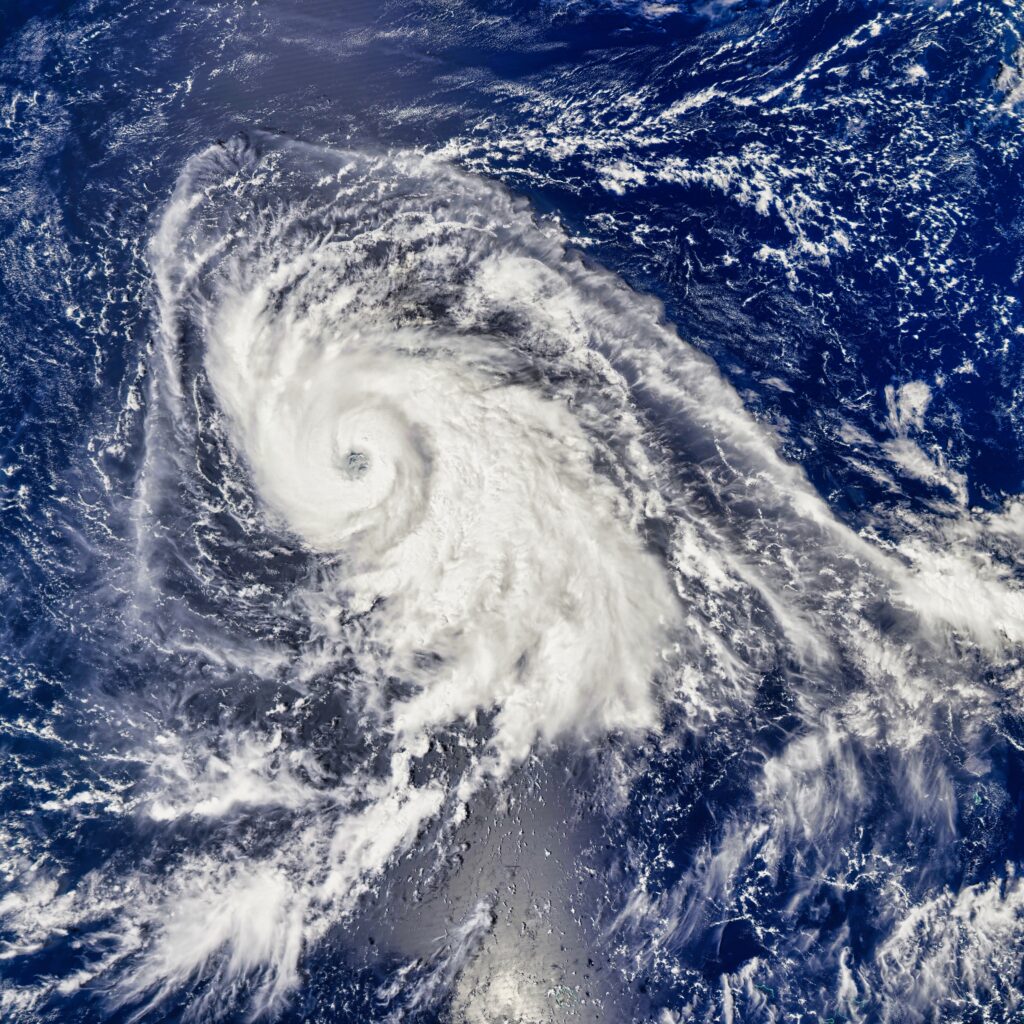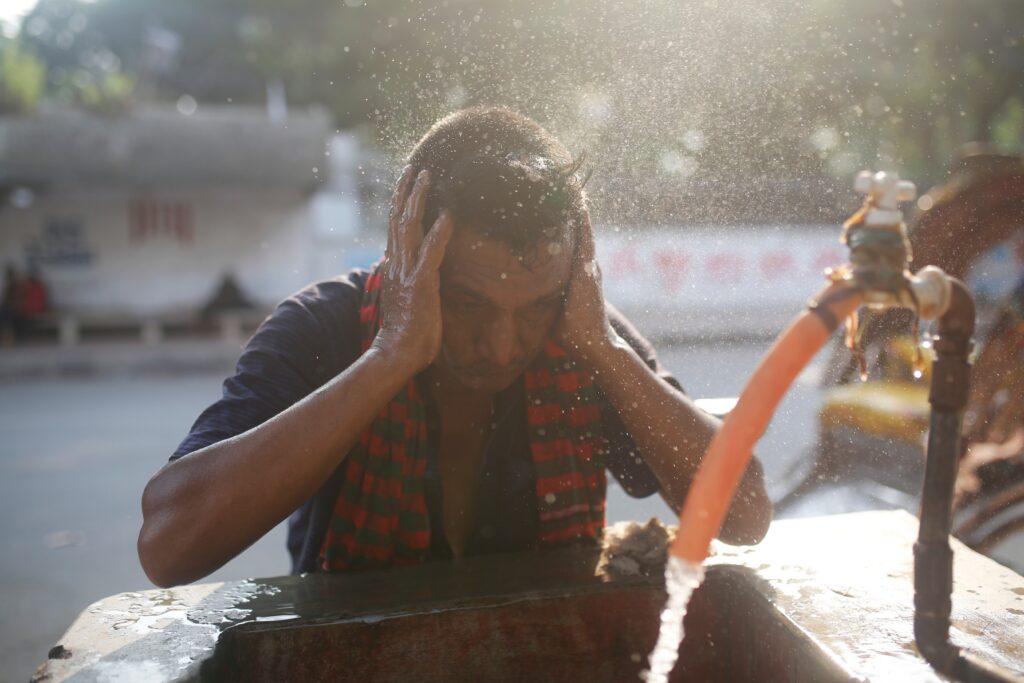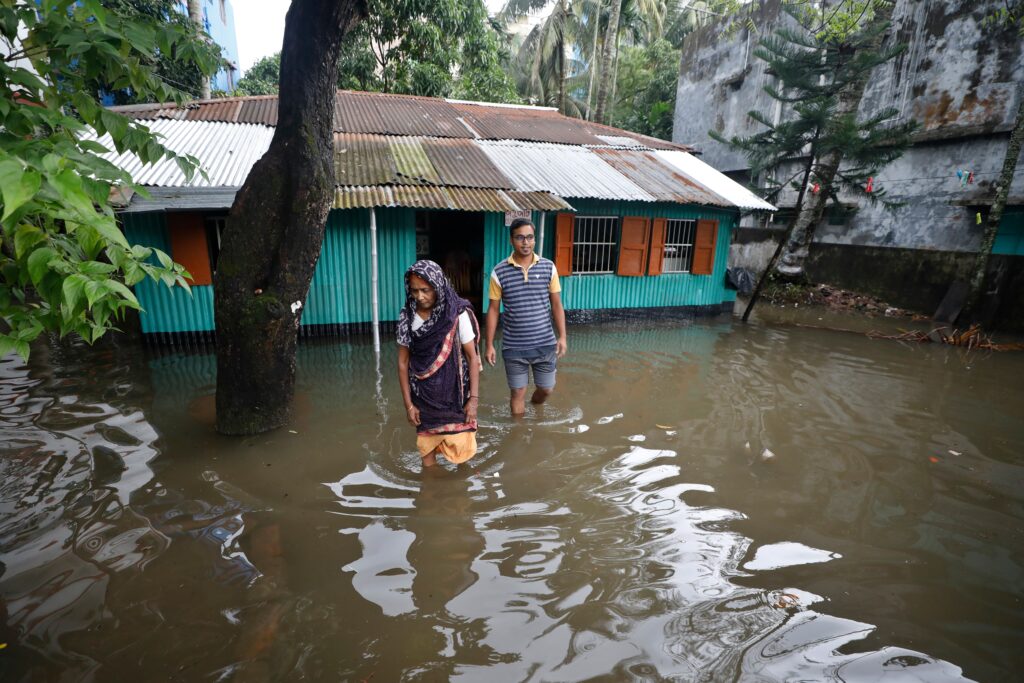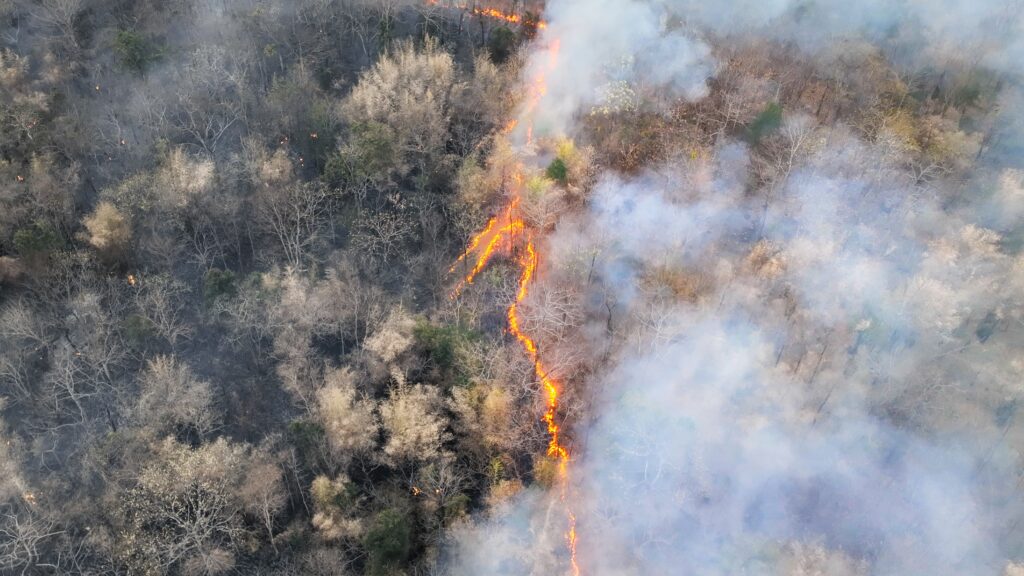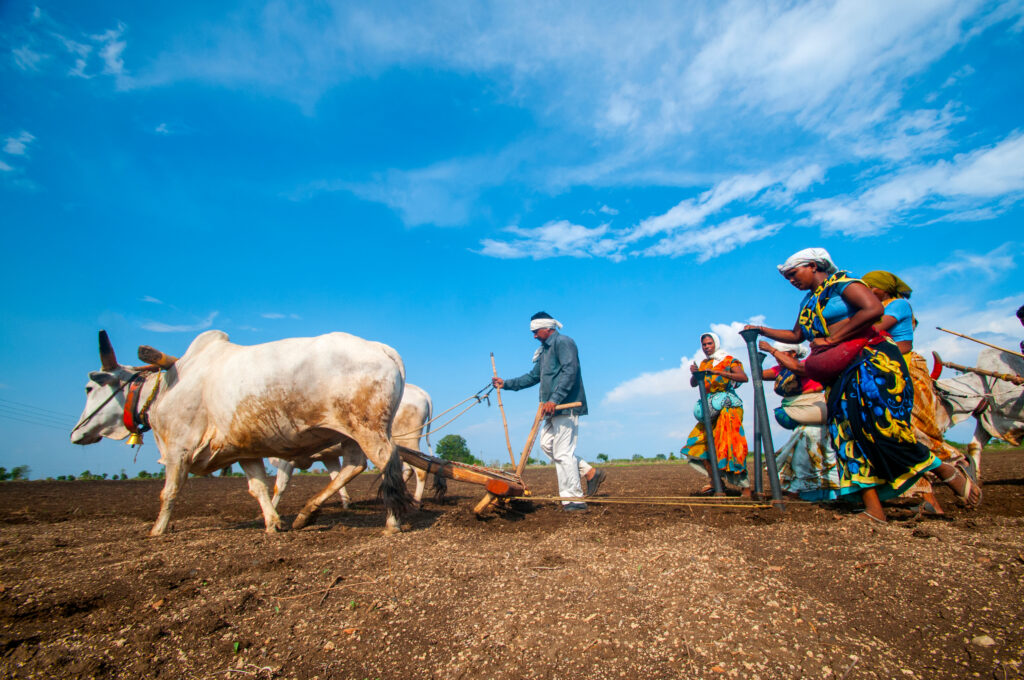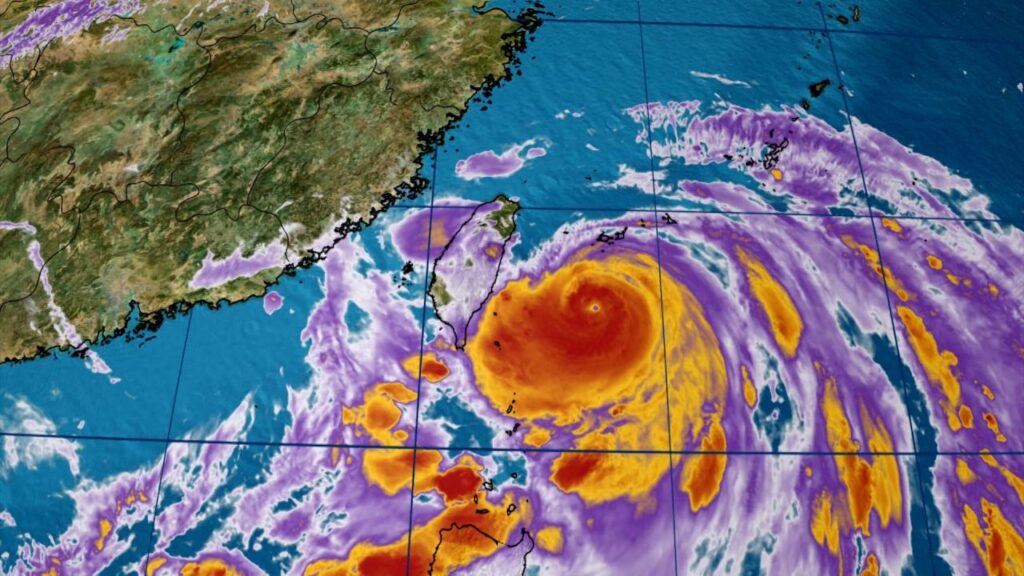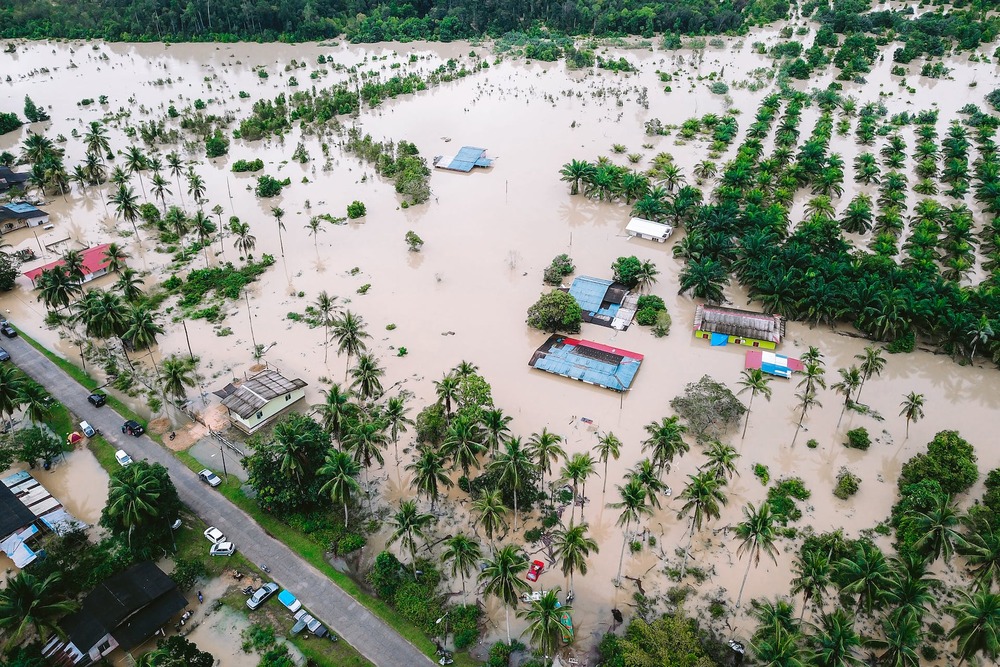Asia is going thorough an extreme heatwave. The average historical humidity across Southeast Asia in April can often reach 70-80%. According to scientists, at these levels, the maximum air temperatures beyond which the conditions start to exceed human survivability are around 37-37.5°C. Depending on an individual’s condition, even air temperatures of 28-30°C can substantially increase body temperature due to the inability to sweat and cool off. The result is adverse health impacts, including permanent disability, heatstroke and death.
According to a study by World Weather Attribution (WWA), in April and throughout May, Southeast Asia experienced a heatwave, with air temperatures well above 40°C for many days.
Heatwave in Asia Broke Temperature Records
Many countries broke their daily temperature records. In parts of India and Myanmar, temperatures hit 46°C and 48°C, respectively. Vietnam and Thailand saw the mercury surpassing 44°C. In cases of extended exposure, these extreme temperatures can be deadly for people working outside and without access to proper cooling or hydration. And they have already claimed lives across the affected countries, including Bangladesh, India, Thailand, Myanmar, Cambodia, and the Philippines.
The study’s authors warn that, given the world’s current progress in emissions reduction, such heatwaves will become way more frequent.
“Unless the world takes massive, unprecedented steps to reduce emissions and keep warming to 1.5°C, extreme heat will lead to even greater suffering in Asia,” says Mariam Zachariah, a researcher at the Grantham Institute, Imperial College London, and co-author of the report. Many areas, including parts of India and Bangladesh, “will soon reach unlivable conditions”, she adds.
These warnings coincide with the conclusions of the 2023 State of the Climate in Asia report by the World Meteorological Organisation. It says that Asia remains the most disaster-hit region from climate and water-related hazards in the world, with an accelerating warming trend and more severe heatwave impacts expected in the future.
WWA: Climate Change Has Made the Deadly April-May Heatwaves More Frequent and Extreme
In a dedicated study, WWA scientists from Lebanon, Sweden, Malaysia, the Netherlands, the United States and the United Kingdom analysed the impact of the deadly heatwaves that affect millions of Asians in the west, south, and southeast regions in April and the beginning of May. The analysis concludes that the extreme and prolonged heat caused deaths, ecosystem disruption, water shortages, crop losses and widespread school closures across the continent, from Palestine, Bangladesh and India to Thailand, Myanmar, Cambodia and the Philippines.
More disturbingly, the scientists warn that the hundreds of deaths reported is a conservative figure, with the actual toll likely being way higher.
West Asia, where the temperatures usually peak later in the summer, experienced an unusual three days with temperatures above 40°C in late April. According to WWA, climate change made the extreme heat event five times more likely and 1.7°C hotter. The heatwave also exacerbated the challenging conditions that millions of migrants and displaced people living in tents in refugee camps in conflict zones, like Gaza, are already struggling with, including water shortages and difficult access to medicines.
The analysis notes that the extreme heat disproportionately affected particular groups, including those employed in the agricultural, transportation and construction sectors. As a result, they faced elevated health risks, reduced incomes and disrupted livelihoods. In Southeast Asia, the extreme heat closed thousands of schools.
The study’s findings continue a trend reported in WWA’s previous analyses of heatwaves and their impact on Asia. The 2022 India and Pakistan heatwave, for example, brought drier heat that led to widespread harvest loss. In 2023, the heatwave was more humid and affected a bigger part of the continent, including India, Bangladesh, Thailand and Laos. Both studies concluded climate change has made the heatwaves in South Asia 30 times more probable and around 1ºC hotter.
According to the 2024 WWA study, the extreme temperatures are now about 45 times more likely and 0.85ºC hotter.
Extreme Heat in the Philippines
The recent heatwave brought temperatures of 42ºC and closed over 4,000 schools across the Philippines. Officials even had to set up portable pools to help people cool down.
The WWA report finds that the chance of a similar heatwave occurring during April in the Philippines is higher than in other regions. With the influence of the El Niño factored in, it is 10%, or once every decade and 5% without it. In comparison, the probability for the broader South Asia region is once every 30 years.
The study’s authors also find that human-induced climate change has increased the likelihood and intensity of extreme heat events in Asia. They conclude that for the Philippines, in particular, the change is so significant that the event would have been impossible without climate change.
Another alarming sign for the Philippines is that the 2024 heatwave brought the country its hottest night ever, with temperatures observing a low of 30.2ºC. Scientists consider high nighttime temperatures alarming, especially in regions with higher humidity. The main reason is that they don’t allow human bodies to recover from daytime heat.
Without relief from the heat, the heat stress can increase significantly. In fact, during heatwaves, nights can even be deadlier than the daytime since the humidity is usually higher. According to a study in The Lancet Planetary Health, higher nighttime temperatures can increase heat-related deaths sixfold by 2100.
The Worst Might Be Just Around the Corner
Scientists consider the recent heatwave unprecedented. April became the hottest April in history and the 11th consecutive warmest on record, with temperatures 1.58ºC higher than pre-industrial times.
The levels of heat that have tormented the world in the past year have even surprised scientists.
According to the WWA, if the world warms to 2°C above pre-industrial global mean temperatures, the likelihood of extreme heat would increase further, by a factor of five, for the Philippines. The temperatures would increase another 0.7°C. This means April’s extreme heat will occur every two to three years in the country. For South Asia, climate change has made such heatwaves 45 times more probable and 0.85°C hotter.
The Intergovernmental Panel on Climate Change (IPCC) warns that at present levels, heatwaves will occur once every 10 years and be around 1.2°C hotter. According to the WWA, at a 2°C global temperature rise, heatwaves will occur every 3.5 years across the West, South, and Southeast parts of Asia. They are likely to become 2°C hotter as well.
A Lancet Countdown study warns that a temperature rise of 2°C by 2100 will cause a 370% increase in annual heat-related deaths by 2050. Southeast Asia will be among the most affected regions.
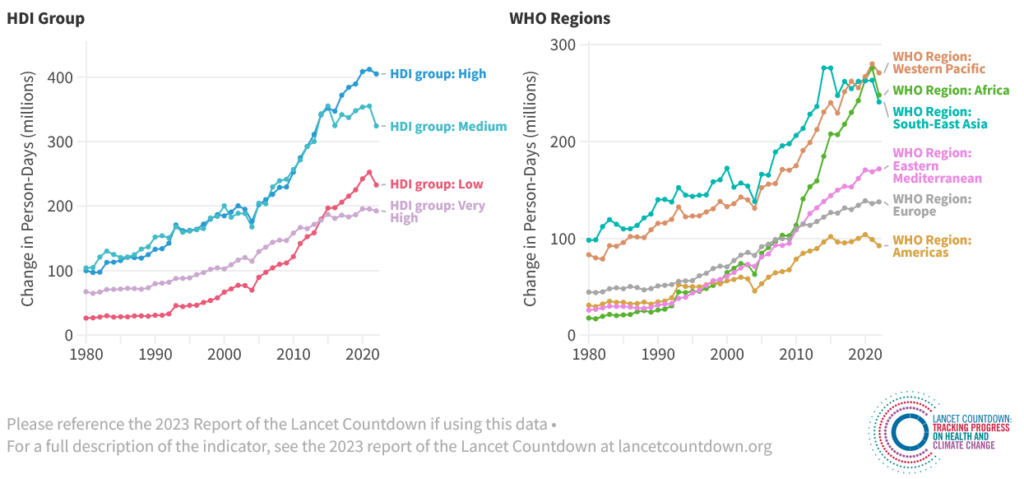
The 1.5°C target was proposed in 2015 by an alliance of some of the most climate-vulnerable small island states under a campaign with the name: 1.5 To Stay Alive. However, this target is increasingly likely to soon be broken. Climate models project that the average temperatures are on course to pass 1.5°C in the early 2030s. We will surpass 2°C around 2050. The current projections are that if governments’ current climate policies are fully implemented, the global temperature rise will be between 2.5 and 2.9°C by 2100.
At these levels, scientists warn that we are entering “uncharted territory.” While the outlook looks grim, scientists consider it a very probable scenario.
The Guardian recently conducted a major study, gathering the views of 380 of the senior authors behind the reports of the IPCC and leading climate scientists on what the future holds.
Disturbingly, 77% said they expected a catastrophic temperature increase of at least 2.5°C. Another 42% consider breaching 3°C a realistic scenario. Just 6% think humanity will limit the temperature rise to 1.5°C. According to the climate scientists, such developments will have massive social consequences, including famine, mass migration, conflict for resources like water and more.
The respondents identified the lack of political will as the biggest barrier to climate action.
Climate Scientists Say the Solution Is Clear, but We Aren’t Using It
In light of the heatwave, many governments issued health warnings advising people on how to avoid heatstroke. However, those have done little for outdoor workers and people living without access to proper cooling, such as those in war-torn regions, who have no other choice but to endure the severe heat. Although anybody may be at risk from extreme heat, impacts are disproportionately and unequally spread, with the most vulnerable communities suffering the greatest consequences.
The WWA study identifies several measures that can help governments protect the most vulnerable. Among them are early warning systems and detailed heat action plans such as those already applied in India. Others include improved urban planning by designing more green spaces, cool roofs and alignment with climate-informed building codes. Important points of focus are also advancing household heat coping strategies and protection for the heat-exposed workforce, such as those employed in construction, agriculture, fisheries, transportation and other services. These come in the form of mass hydration programs, reduced work hours and income protection. Cross-sectoral collaborations and regulations for introducing heat relief and mitigation measures to protect human and ecosystem well-being are also critical.
While those measures are intended to enhance countries’ heat adaptation capabilities, they won’t address the underlying root of the problem: increasing carbon emissions that fuel climate change and make heatwaves more frequent and severe.
“Heatwaves have always happened. But the additional heat, driven by emissions from oil, gas and coal, is resulting in death for many people,” explains Friederike Otto, senior Lecturer in Climate Science at the Grantham Institute at the Imperial College London and co-author of the WWA report. “If humans continue to burn fossil fuels, the climate will continue to warm, and vulnerable people will continue to die,” she warns.
Some climate scientists estimate that to have even a 50:50 chance of achieving 1.5°C at the current emissions rate, we have around six years to get to net zero.
Yet, in 2023, the levels of the three most important human-caused greenhouse gases – CO2, methane and nitrous oxide – continued to increase. In fact, through a detailed chemical analysis of ancient Antarctic ice, scientists have found that today’s rate of atmospheric CO2 increase is 10 times faster than at any other point in the past 50,000 years – something they call “unprecedented.”
According to the State of Climate Action 2023 report, just one of 42 climate action indicators is on track to achieve the 2030 targets. Moreover, the authors note that some indicators are heading “in the wrong direction entirely”.
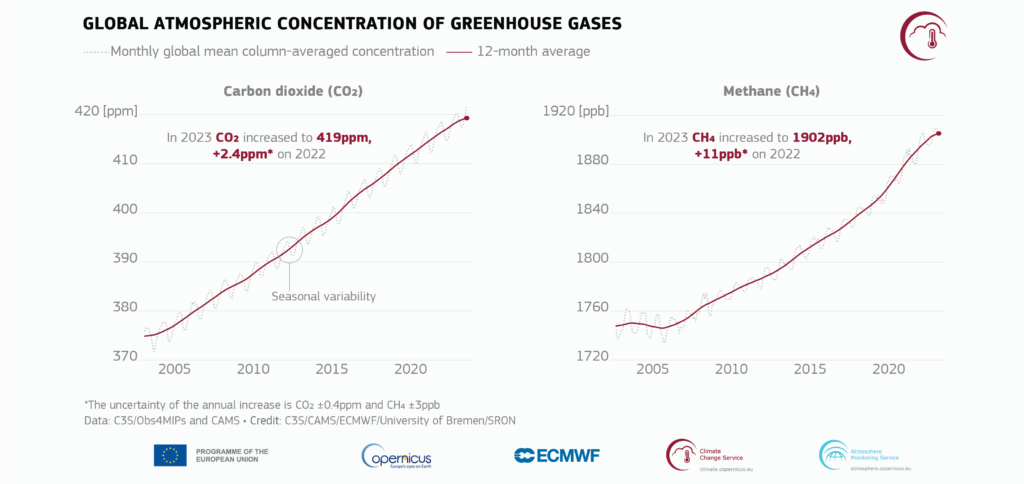
Developed countries, which historically bear the biggest responsibility for climate change’s worsening impacts, should take the lead in emissions reduction. By advancing bold climate action and mobilising financial support for adaptation, mitigation and loss and damage, they should address the disproportionate climate damage in Asia and help countries improve resilience.
However, for developing Asia, the current heatwave is also a crisis of its own making, since the emissions intensity of Asian economies is 41% higher than the rest of the world.
“Climate change is bringing more days with potentially deadly temperatures to Asia every year,” explains Zachariah. “Unless the world takes massive, unprecedented steps to reduce emissions and keep warming to 1.5°C, extreme heat will lead to even greater suffering in Asia,” she warns.
In an interview for the Guardian, Prof. Benjamin Horton, director of the Earth Observatory of Singapore, explains that even if we immediately decide to reduce our GHG emissions, the impact won’t be immediate since there are certain levels of heat accumulated already that we will have to continue dealing with for at least 50 years.
Despite the repeated warnings of temperature records being broken, governments haven’t done enough to protect the most vulnerable against extreme heat. And while climate scientists have already done their job, providing us with a blueprint on how to ensure a liveable future, it is up to the stakeholders in the political, economic and social systems to follow up on it.
Viktor Tachev
Writer, Bulgaria
Viktor is a writer that specialises in green finance and ESG investment practices. He holds a Master's degree in financial markets and has over a decade of experience working with companies in the finance industry, along with international organisations and NGOs. Viktor is a regular contributor to several publications and comments on the likes of sustainability and renewable energy.
Viktor is a writer that specialises in green finance and ESG investment practices. He holds a Master's degree in financial markets and has over a decade of experience working with companies in the finance industry, along with international organisations and NGOs. Viktor is a regular contributor to several publications and comments on the likes of sustainability and renewable energy.



